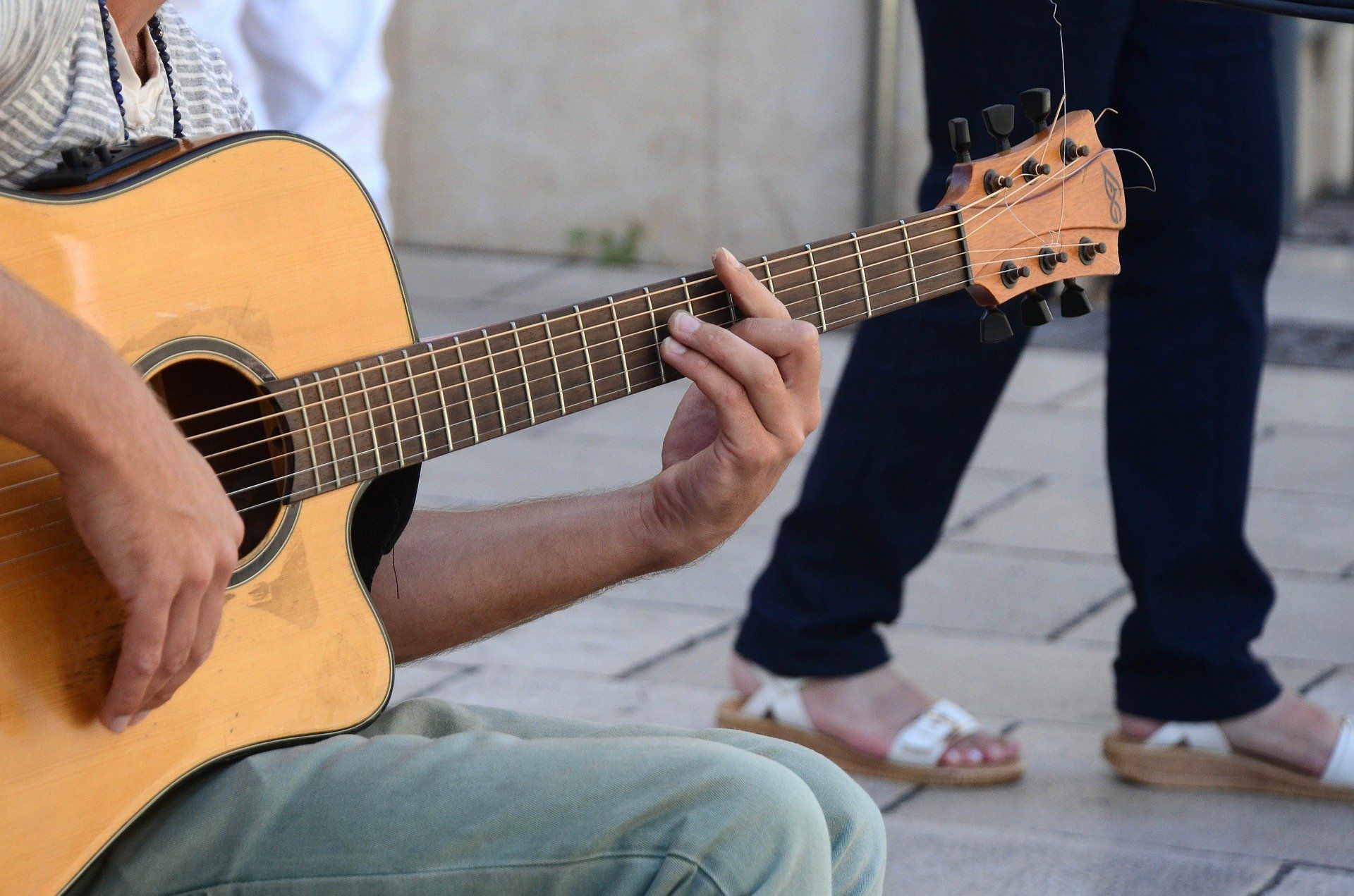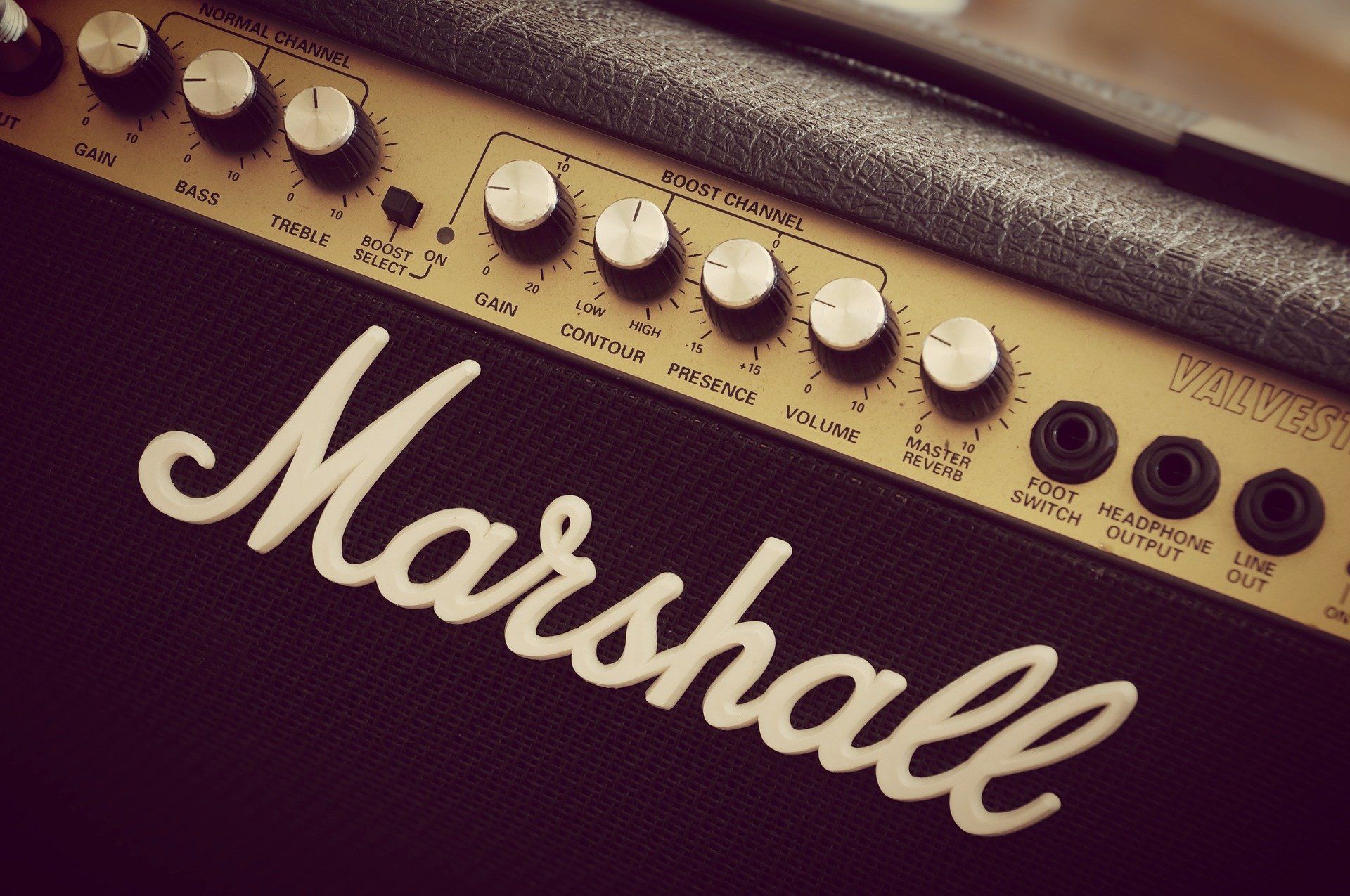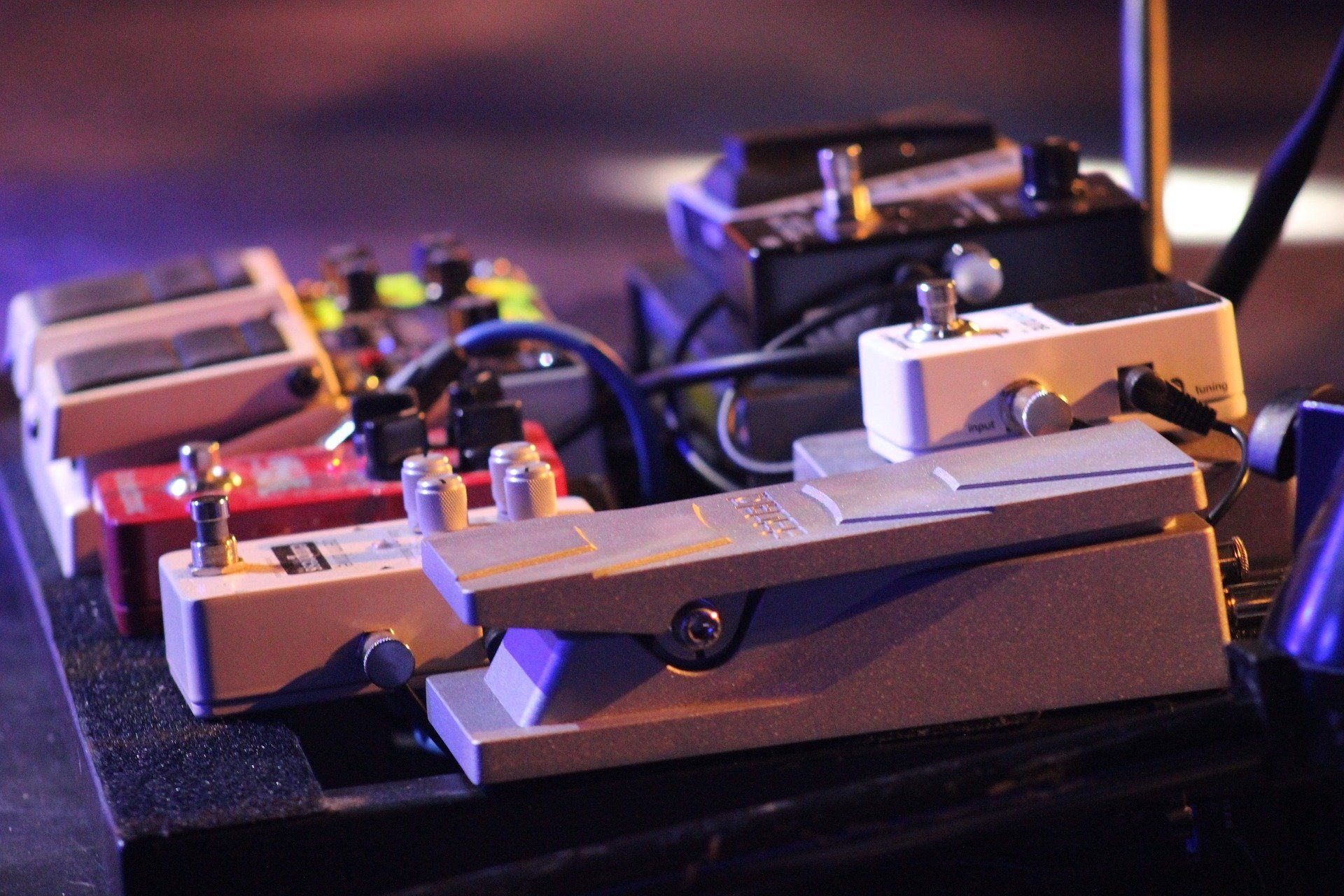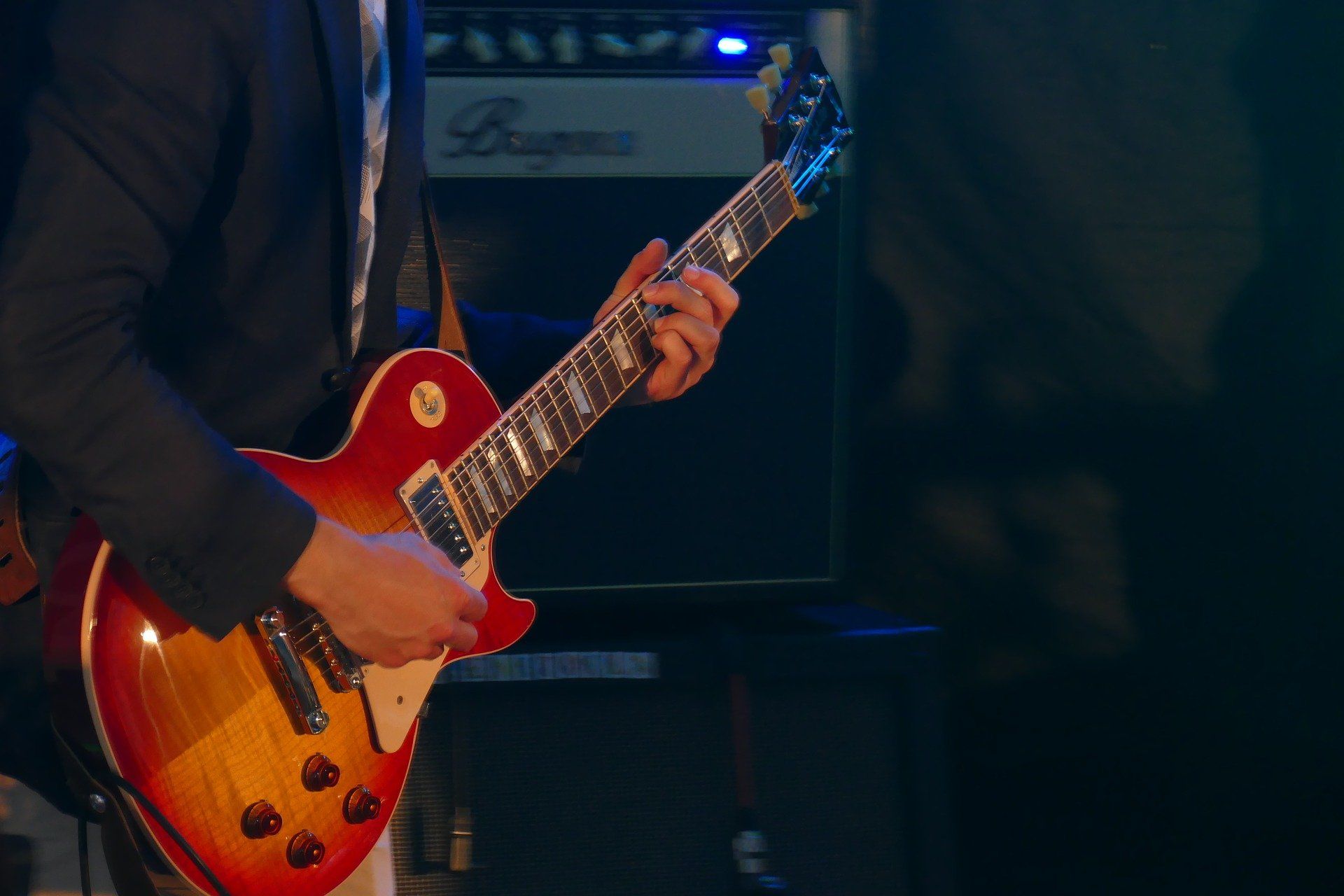How To Create The Perfect Guitar Practice Schedule For You - And Achieve Your Goals Fast
A new approach - and the power of complete FOCUS...

One of the most common questions beginners ask is "How do I make a practice schedule?"
Even if you've been playing a while, it can be difficult. There are just so many areas to practice, and so little time to practice them in!
The thing is, your practice makes a huge difference to how good you are on the guitar. How much time you spend, along with the quality of that time, is the difference between a beginner and a pro.
That's why it's super important to make sure you spend your time effectively. Read on!
Download
the free TomGuitar Practice Worksheet
to record all of your practice material for this article. You can refer to it every time you practice to stay focused and reach your goals. It also includes a complete example schedule to help you create the perfect practice plan.
Play Vs. Practice
Firstly let's define "playing" and "practising".
"Playing" is when you're noodling around, playing your favourite song and having a great time. You're not really trying to learn anything new - just having fun!
"Practising" is when you're actively trying to learn new stuff. It's when you sit down with a scale diagram, backing track, metronome etc. and deliberately focus on getting better at a specific thing.
You should do BOTH on a regular basis if you want to be good.
Some people think "you should spend all of your time practising. Playing is useless because you don't improve" but this couldn't be further from the truth!
You should spend plenty of time "playing" and noodling around, just like you should "practising". Even though when you're "playing" and you're not focusing on anything specific, you're still improving.
Your timing is getting better. You're exercising your creativity. You're repeating finger movements that will help you get faster. Most importantly, you're enjoying yourself!
And that should be your number 1 priority on guitar.

Keeping up the interest is just as important as keeping up the learning. The more you enjoy it, the more you'll be motivated to practice.
Some people think that because practice is focused on getting better, it can't be fun. This is another HUGE misconception.
Whack a backing track on, crank up your amp, and tell me practising improvisation isn't fun!
Practice and playing - you need both to be a great guitar player.
Is A "Schedule" Right For You?
People spend so much time asking what should be in their practice schedule that they forget to ask whether they actually need one!
You can find out by asking yourself these two questions:
1) Am I SUPER passionate and excited about guitar?
2) Do I practice because I want to and love it, or because it's something I know I "should/have to" do?
Be completely honest with yourself. If you are both SUPER passionate about guitar and you practice because you love it, then create a schedule! If not, hold back a little.
If you create a schedule when you're not really feeling it, you risk becoming bored with the guitar. That's the LAST thing you want - it should not feel like a chore.
If it does, you're doing something wrong.
You can still practice of course, but don't make it regimented. Just aim to play
the guitar every day (even for 2 minutes) and see where it takes you.
If you feel like practising something new, like a new song, then go ahead! Don't feel like you have to, though - if you just wanna make a load of noise through your amp, then crank up and have fun.

Don't force it.
Some days you won't feel like practising, and that's OK - just play. Have fun with it, and don't take it so seriously.
If you've decided you want a practice schedule, though (if you're passionate and you love practising) then read on.
Why Dividing Your Time Is A Bad Idea
So you've established whether or not you want a practice schedule.
Now comes the main question: What to practice?
Most people advise dividing your time up and practising lots of different areas at once. For example, if you had 30 minutes a day to practice, you might do:
- 5 minute warm-up
- 10 minutes on scales (2 patterns)
- 10 minutes on technique (2 different exercises)
- 5 minutes improvisation
That's a common but really ineffective way to practice - I am a firm believer in focusing on ONE thing at a time . There are three reasons:
Firstly, because you're practising lots of different things (in this case 5), your resources - time, motivation, etc. - are all divided. This means you'll progress WAY slower, because you can only allocate 1/5 of your resources to each thing.
You might think you'd progress 1/5 of the speed in each activity and at the same speed overall, but actually you'll learn even slower! Remember that it's not just your time that's divided - your attention, motivation and so on are all split up too.
Secondly, each thing you master makes it easier to master the next thing, because you have something to build on. If you focus on one thing first and master it, that makes it easier to learn other things.
This means that the more stuff you learn, the faster you progress. Focus on one thing and you'll learn it quickly, which means you'll learn the other stuff more easily too.
The final reason is motivation. The key to staying motivated is to get results, and by focusing on ONE thing at a time you'll get noticeable results really quickly. This skyrockets your motivation and makes you learn so much faster.
The 75% Rule
Instead of dividing your time, I suggest you spend 75% or more of your practice time on ONE small thing.
It could be one specific shred lick, or one scale pattern, or one solo - it doesn't really matter as long as it's small and you can master it quickly.
The other 25% of your time you can spend practising other stuff, or just playing and having fun. This is there to add interest and to maintain your other skills. Do not plan this extra 25%
- just do whatever you feel like doing on the day.
What To Practice - Focus and Complementary Exercises
So what do you practice?
Well, you should have one main focus plus a few similar exercises that focus on the same skill to make it interesting without hindering your progress.
For instance, I could focus on one single-string alternate picking lick. I could have a few other single-string alternate picking licks too to practice if I get bored of the main focus.

The key is that the complementary exercises must focus on the same skill as the main one.
If your main focus is the major scale
, for example, you could have complementary exercises of learning the note names on the fretboard (a vital part of playing the scale all over the neck), and analysing songs in major keys (which will help you understand how the scale is used in music).
Remember - the complementary exercises must focus on the same skill! If your main focus is 3-string sweep picking then don't choose modal theory, or a legato lick, as extra stuff.
For that matter, don't choose 4-string sweeps as your extra exercises - stick to the same challenge, which in this case is 3 string sweeps.
All your exercises must focus on the same thing - remember that!
Compelling Reasons
People generally quit practice schedules for two reasons: lack of results, and lack of clear reasons to do it.
We've already covered results, so what about the reasons you're doing it?
This is all down to you - it's unique for each person and each topic.
Why are you really
practising sweep picking, or the minor scale? Is it to play a new song with your band? To write your own music? To have fun improvising cool solos?
Whatever the reasons are, write them down! On the practice worksheet you'll find a section where you can write down your three biggest reasons for learning whatever you're focusing on; I've done an example to give you ideas.
This is so important, yet so few people ever do it.
Write down your reasons! It makes more difference than you think.
Your Emergency Plan
Most people create practice schedules by estimating how much time they have each day, and then building everything around that.
Then, a day comes along where they're super busy and they can't fit in the full 30 minutes (or 60 minutes, or however long they normally do).
They can't decide what to practice in their limited time so they end up doing nothing. A few days in a row of this and you're out of the habit of practising! It can be really difficult to get back into it again.

To avoid this, I suggest you have a MINIMUM amount of practice called your "emergency plan" - the amount you always promise to do even if you're super busy.
10 or 15 minutes is enough for this. It's so that you always do something
, even if it's not ideal. This way you're keeping your habit alive.
Most days you'll obviously do more - however long you want to do - but this is the minimum amount you ALWAYS do every day, no matter what else is going on.
Normally you don't need to plan exactly how much practice you do, but the emergency plan keeps you focused even when you have other priorities.
It's a simple concept, but put it to use and you'll realise how effective it is.
How Long Should I Focus For?
So when should you move on? At which point do you focus on something else?
When you've mastered whatever you're practising, that's when you should go on to something new.
This is why it's important to only focus on a small area at a time - if you choose something too large, it'll be ages before you've mastered it.
It's good to have some idea of how long you'll focus on a specific thing, but it can be difficult to estimate how long it takes to master something.
That's why I follow this rule: however long I think it'll take to master something, I'll spend double that amount of time focusing on it.
Think it'll take three or four days to master a new scale pattern? Commit to a week on it. In fact, two weeks would be even better!
This not only makes you more likely to master the thing, it also prevents frustration.
You get frustrated when you don't get the results you expect. By deliberately doubling the time we expect it'll take to master something, we're reducing the chances of getting frustrated.
Follow this rule and be deliberate in the amount of time you spend on something - write it down on the practice worksheet.
Bear in mind that sometimes you won't even master the thing in double the time. If this happens then it's up to you: move on, or stick with it for another week or two. Just don't get frustrated! Frustration gets you nowhere.
Final Thoughts
Hopefully this article has given you a new approach to practising.
You don't need a perfectly divided, complex practice plan - using a few simple ideas works far better.
Focus on ONE thing, and see how much more effective it is. Try this new method of practising for a few weeks - without quitting - and see what your results are like.
Grab the Practice Worksheet PDF
to record all of your practice stuff (exercises, emergency plan and so on) to optimise your results. It also includes a pre-filled-in example to give you ideas for your own schedule.
Have fun, and keep rocking!
